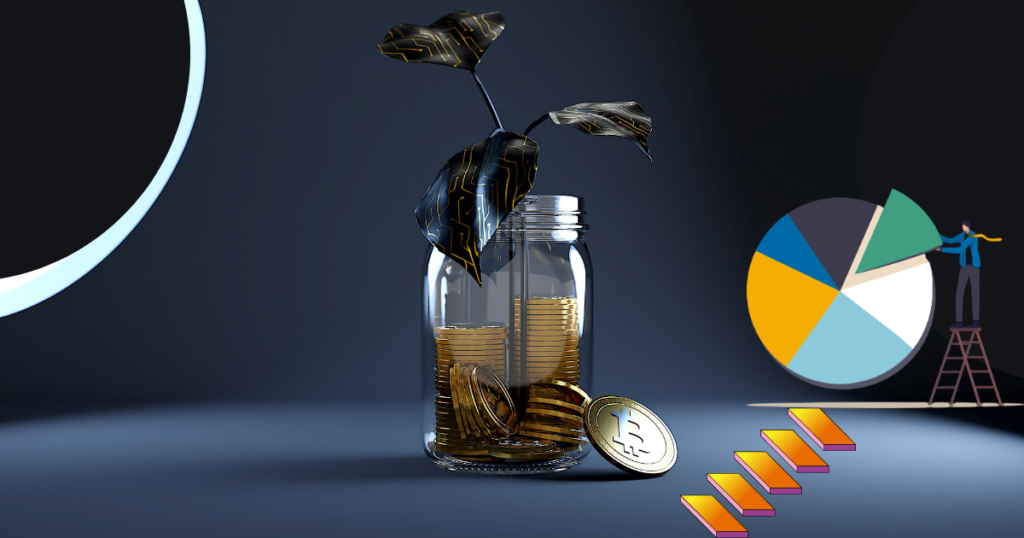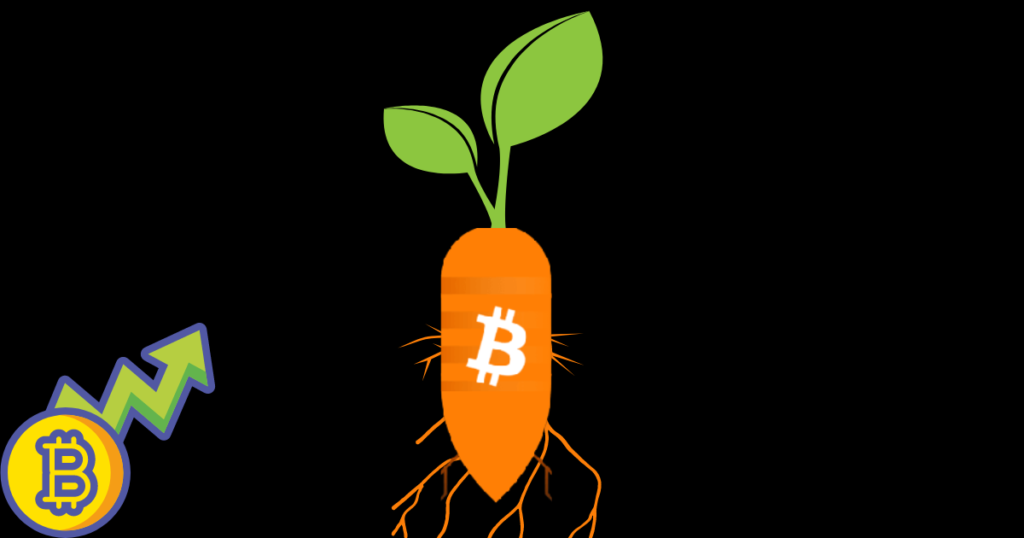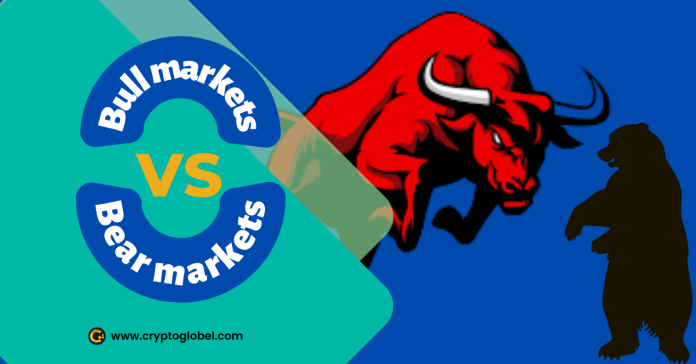Bull markets vs Bear markets, A bear market happens when Crypto and Stock markets fall steadily over time, whereas a bull market happens when crypto and stock markets are rising.
This year the economy has been a major subject of discussion. It’s understandable that people are concerned about the direction that economy is taking, with prices rising everywhere and interest rates rising steadily Bitcoin and s&p 500 entered a bear market. Since we’re talking about the economy, you might have heard the terms bull market and a bear market.
These two expressions are so universal that even those who use them do not know what they mean, that’s why it is better to take a more in-depth look at these two different kinds of markets and the role that each plays in your overall investment strategy. Bull markets vs bear markets, how they will affect you and your investing and financial decisions
What is a Bull Market?
A bull market is when the prices of investments keep going over a long period of time, at least 20 percent from the most recent low point. Bull markets vs Bear markets, Bull markets tend to happen when the economy is strong. The gross domestic product GDP is high and the unemployment rate is low. Public opinion is often favorable during bull markets and investors are ready to acquire and hold investments because they believe their value will increase.
A trend like this is based on the stability of investments to come and the general confidence in the economy. It is easier for people to spend more money on goods and services when the economy is doing well and there is less unemployment. Investor sentiment has a huge impact on whether the market rises or falls because of how people see the economy.
What is a Bear Market?
The market has entered bear market territory when the prices of investments go down for a long time usually 20% or more. As the prices of investments keep going down investors’ confidence drops and a negative mood grows, which drives down the value of securities.
Bear markets in contrast to bull markets are frequently accompanied by a sluggish economy and increased unemployment rates.
Bear markets can be caused by global events like a pandemic and they tend to happen at the same time as bull markets, which is different from bull markets.
It is not uncommon for people to get a bear market and an economic recession confused with one another. Despite the fact that the two frequently go hand in hand each is associated with a distinct set of problems. A bear market refers to a decrease in the stock market that is driven by negative investor mood, which is frequently brought on by fear or uncertainty.
Bull markets vs Bear markets, On the other hand, an economic recession is characterized by a general slowdown in economic activity as well as a significant decline in GDP. Bear markets can happen at any time and without notice, which makes it easier for investors to be caught off guard. Even though it’s hard to say when the next bear market will start and how long it will last. History shows that bear markets do happen and are pretty normal when it comes to investments because bull and bear markets are difficult to forecast. Investors can often only detect the occurrence after it has already occurred. So these different market conditions are labeled after the fact instead of before they happen.

Key differences between Bull markets and Bear markets
Bull markets vs Bear markets, What are the key differences between bull and bear markets? Changes in the unemployment rate, When the market is going up the unemployment rate goes down, When the market is going down the unemployment rate goes up. Throughout bull markets, businesses grow and hire more people but during bear markets, they may have to lay off people.
A bear market tends to last longer when the unemployment rate goes up because fewer people earning wages means less money for many companies’ interest rates currently in effect. Most bull markets are accompanied by low interest rates, while most bear markets are accompanied by high-interest rates. Businesses can borrow money and grow more easily when interest rates are low. High-interest rates on the other hand tend to slow the growth of businesses.
Read: Crypto Mining Vs Staking: Which one is Best?
Change in GDP
Bull markets happen when GDP goes up and bear markets happen when GDP goes down. GDP goes up when companies make more money and employees get paid more, which allows people to spend more. GDP goes down when company sales are slow and wages stay the same or go down.
Bear markets are often linked to recessions and depressions in the economy. When GDP falls for two consecutive quarters this is called a recession. A depression occurs when the GDP falls by 10 percent or more and remains low for at least two years.
Inflation Rate
Even if there is a greater likelihood of price inflation occurring during times of economic expansion. It can nevertheless take place during times of economic downturn. When there is a bull market there may be high demand for items and services, which may drive prices to rise. When there is a bear market however there may be a lower demand which may lead to prices falling.

Crypto or Stock market performance
In a bull market, crypto and stock prices go up, in a bear market they go down. Even when there are short market corrections the crypto and stock market always go up in value when conditions are bullish. Under bearish conditions, the stock market loses value or stays the same at low prices.
Read: How does Crypto Mining work? | Cryptocurrency Mining Guide
How should you invest when the market is up or down?
Bull markets vs Bear markets, In bull markets, growth stocks tend to do well. While in bear markets value stocks tend to better buy. Value stocks tend to be less popular in bull markets because people think that undervalued stocks must be cheap because the economy is doing well. The manner in which you invest in stocks or cryptos throughout the bull and bear markets mostly depends on your time horizon. If you do not need the funds for decades the current bullishness or bearishness of the market is of little consequence. As a buy-and-hold investor, you probably shouldn’t change your investment plan based on how the market is doing at the moment. Even when other asset classes are going up the stock market and crypto market can still go down and vice versa.
If the stock market and crypto market are going up and you’re worried about rising prices it might be a good idea to put some of your money into gold or real estate. If the stock markets and crypto markets are down you might want to increase the number of bonds in your portfolio, or even turn some of them into cash. You can also spread your investments around the world to take advantage of bull markets in other parts of the world. No matter how the stock market and crypto market are doing right now it’s important to keep your eye on the long-term prospects of the businesses in which you have invested.
Related: How does a crypto wallet work? | Crypto Wallet Explained
Companies with strong business fundamentals are likely to make you a lot of money in the long run. It is essential for any type of investor to have a firm grasp on the concept that a bull market indicates rising crypto and stock prices and a healthy economy. Whereas a bear market indicates decreasing crypto and stock prices and maybe a feeble economy keep in mind that maintaining your current investing strategy is typically the smartest thing you can do with your money while a bear market is occurring. Even though it is easier to feel confident about your investments when the market is bullish.

